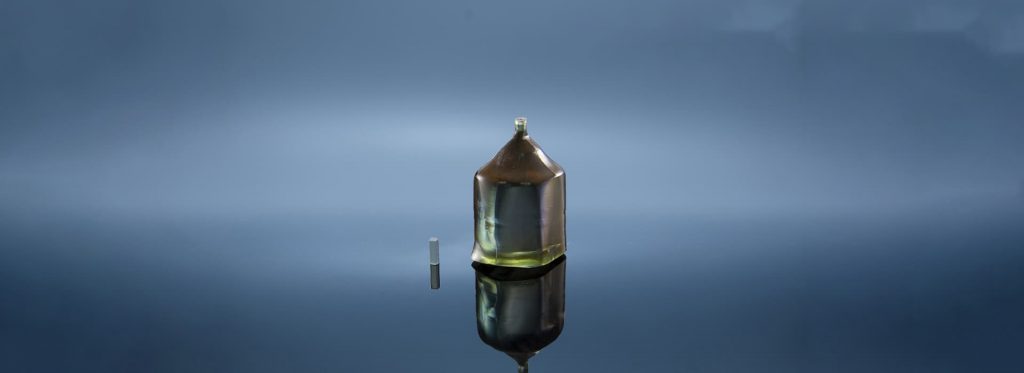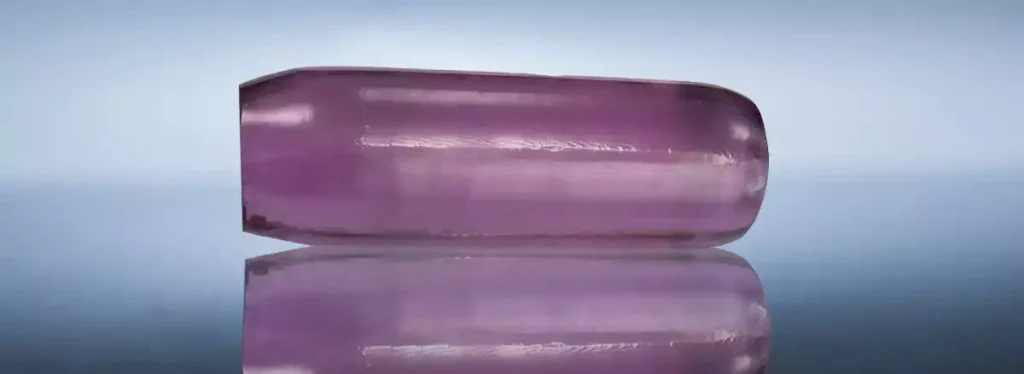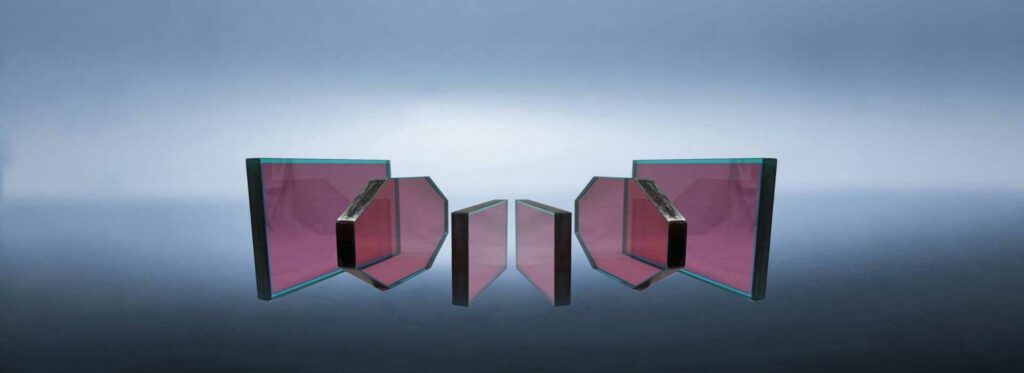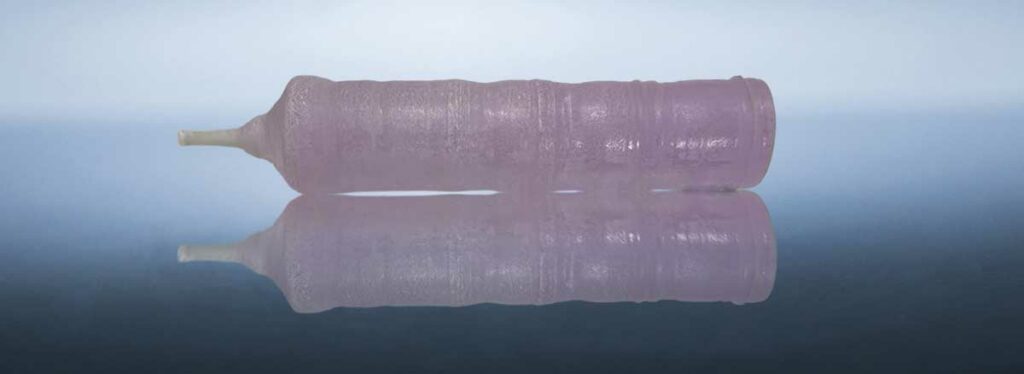Nd: YVO4 and Nd: YAG are the industry’s most mature solid-state laser media. The absorption wavelength of the Nd-doped laser gain medium is mainly around 0.8 um, which is suitable for direct semiconductor pumping. The output wavelength has three bands of 0.9 um, 1.0 um, and 1.3 um. Among them, 0.9 and 1.3 um are quasi-three levels with low efficiency. The wavelength of 1.3 μm is suitable for two-photon microscopy and communication.
The wavelength of 0.9 μm has an absorption peak of water molecules, which is suitable for atmospheric detection. Industrial processing is mainly used in the 1um band, with no reabsorption and easy amplification[1].
Ⅰ. What is an Nd: YVO4 crystal?
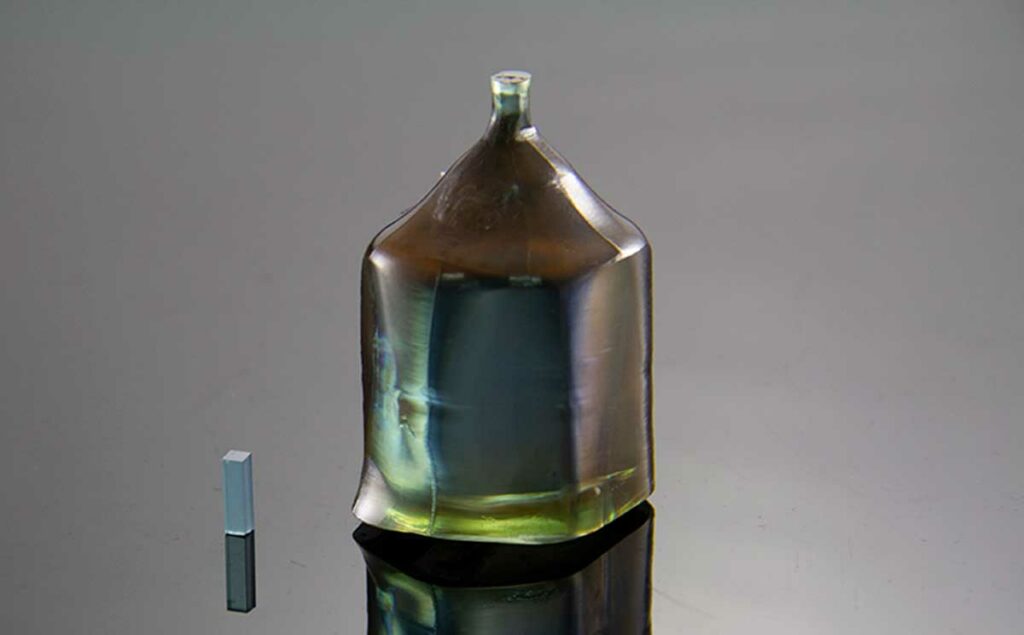
Nd: YVO4 crystal product, also known as neodymium-doped gadolinium vanadate crystal, is a laser crystal product with excellent comprehensive performance for making semiconductor-pumped solid-state lasers. YVO4 crystal is widely used in many fields, such as machinery, material processing, spectroscopy, wafer testing, display, medical testing, laser printing, data storage, etc. The product has the characteristics of good thermal conductivity, large stimulated emission cross-section, high laser damage threshold, absorption bandwidth, and absorption peak of about 808 nm. Because of these advantages, small crystals can be used to make smaller laser devices. Another feature of Nd: YVO4 crystal is that it is uniaxial, emitting linearly polarized light. Combined with frequency doubling crystal, all-solid-state lasers with green, blue, and red wavelengths can be achieved. YVO4 laser has been widely used in many fields, such as machinery, material processing, spectroscopy, chip inspection, display, medical testing, laser printing, data storage, and so on.
And Nd: YVO4 diode-pumped solid-state lasers are rapidly replacing traditional water-cooled ion lasers and lamp-pumped lasers in the market, especially in miniaturization and single longitudinal analog output. Nd: YVO4 can use in laser diode-pumped all solid-state (DPSS) microlasers, lidar, and remote sensing satellite products.
Ⅱ. What is an Nd: YAG crystal
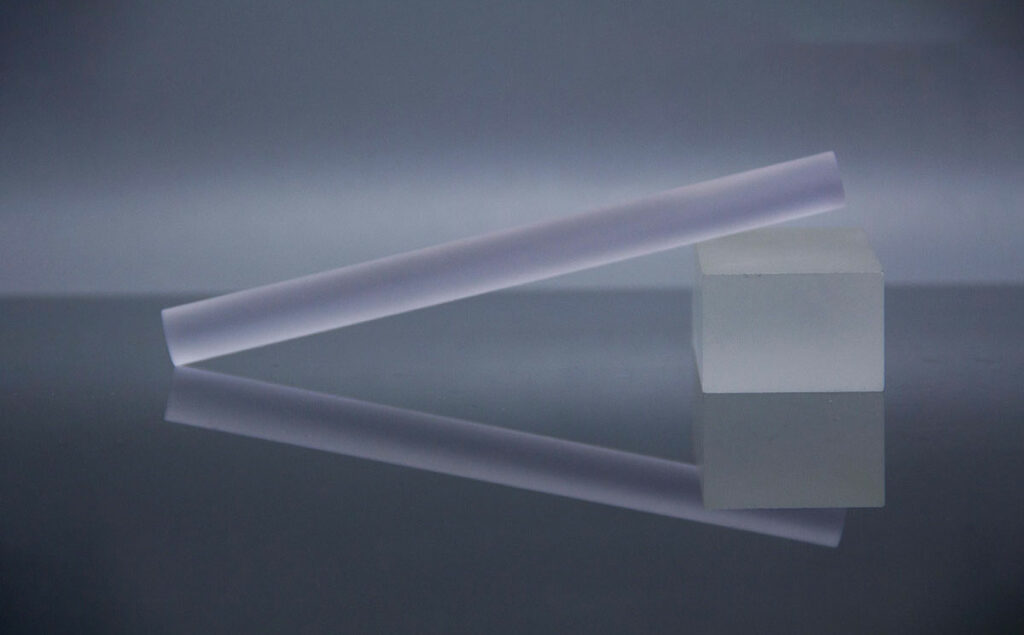
Nd: YAG crystal, referred to as a neodymium-doped yttrium aluminum garnet crystal, is a laser tool crystal with great comprehensive residential or commercial properties utilized for solid-state lasers. The atoms in the Nd: YAG crystal are delighted by the flashlamp, and also the crystal produces magnified light that proliferates at a certain wavelength (1064 nm). Nd: YAG is among the reputable laser crystals acquired by doping Nd ions into YAG crystals.
Nd: YAG laser crystals have absorption bandwidths of 730-760 nm and 790-820 nm and are typically pumped by flash tubes or laser diodes. Typical laser emission comes to a head at 1064 nm. Wavelengths at 946 nm, 1120 nm, 1320 nm, and 1440 nm lasers can be released by different dimensions. Q-switched and locked settings are suitable for getting lasers of various wavelengths (532 nm, 266 nm, 213 nm, and so on) and pulse sizes (10-25 ns). YAG crystals are extensively used in different solid-state laser systems– frequency-doubling continuous-wave changing, high-energy Q-switching, and so on.
Usually, high-concentration doped crystals are used in pulsed lasers, and low-concentration drugged crystals are typically utilized for continuous-wave results. Nd: YAG crystals have many applications in biophysics, medicine, the army, equipment, clinical research, and style.
Ⅲ. What is an Nd: YLF crystal
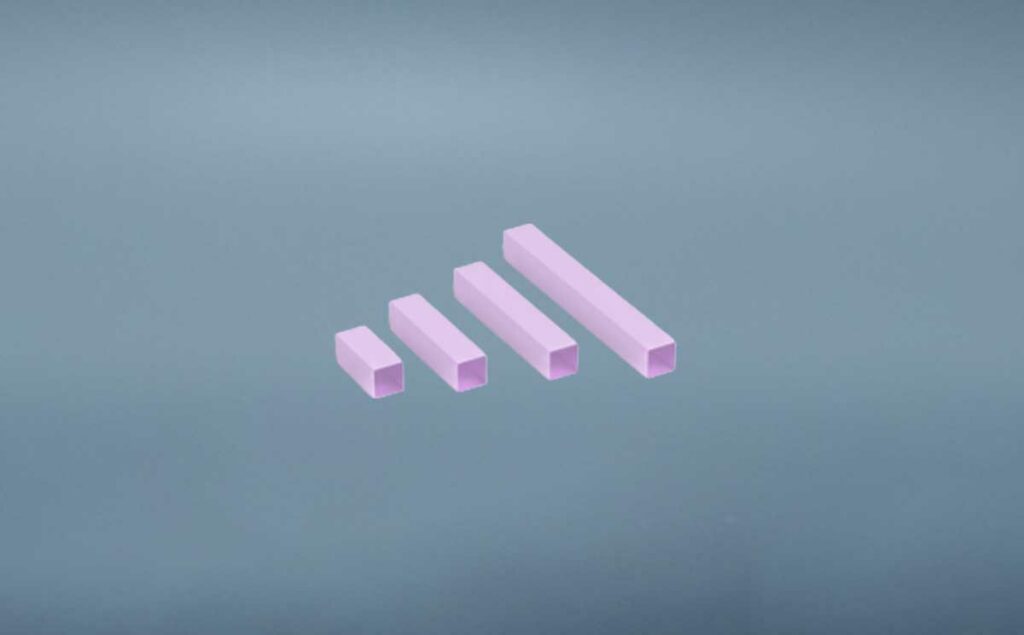
Nd: YLF crystal, which stands for neodymium-doped lithium yttrium fluoride, is a laser crystal product with excellent comprehensive performance. Nd: YLF in a mode-locked laser, continuous excitation. It is widely used in the field of light and material processing. Neodymium: lithium yttrium fluoride (Nd: YLF) is an alternative medium of Nd: YLF, which is used to work in the near-infrared, and-Laser is generated at 1047 nm and 1053 nm. When the pump wavelength is 808nm, Nd: YLF can be pumped by lamp and diode. The product has a large fluorescent linewidth, a low thermal lens effect, and natural polarization. The main advantage of YLF is that the laser has a relatively long fluorescence lifetime at -1047 nm and 1053 nm and produces Generate high pulse energy. Nd: YLF crystal can use in linearly polarized resonators, mode-locked lasers, diode-pumped Nd: YLF lasers, Ti: sapphire chirped pulse amplifiers Products. In addition, the gain and emission wavelength of Nd: YLF is related to polarization: π polarization is strong at 1047 nm, and σ Polarization is lower at 1053 nm. Weak.
The 1053 nm line is suitable for the gain peak of Nd: Glass, so the Nd: YLF laser is usually used as the Nd: YLF laser generator and subsequent Nd: glass amplifier.
Ⅳ. What is an Nd: Glass
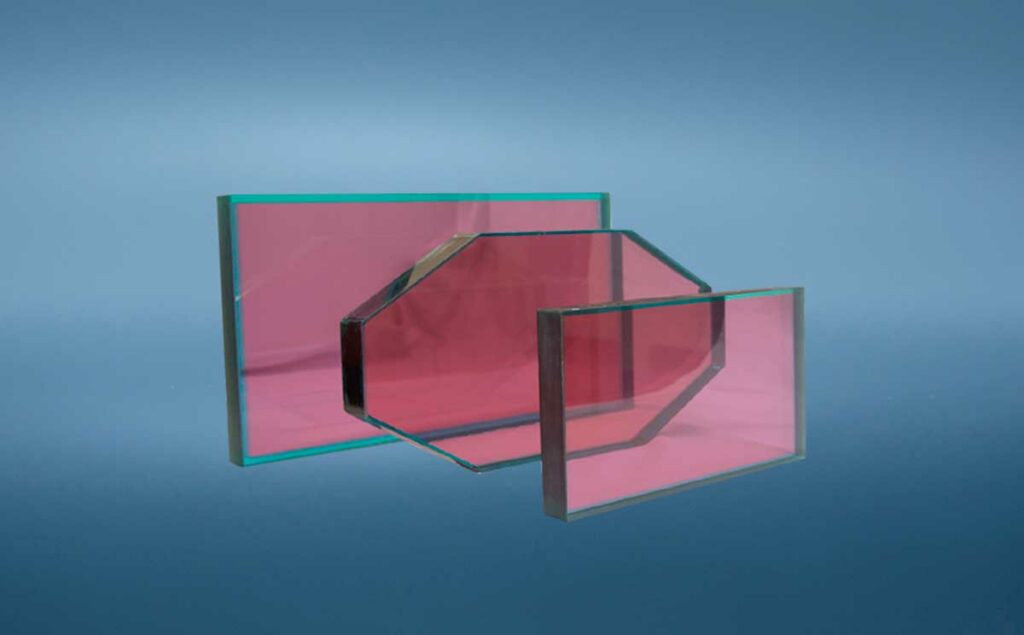
Nd: phosphate glass has been widely used as high-power laser glass since its application in the early 1980s. Nd: phosphate laser glass is mainly used as amplifier material in high peak power laser facilities.
Ⅴ. What are the fields for which the four materials are suitable?
Nd: YVO4 mainly uses high-power nanosecond, picosecond, slat amplification, and Innoslab. Compared with Nd: YAG, the energy level lifetime of Nd: YVO4 crystal is slightly shorter (90-100US), which is suitable for high power and high repetition frequency amplification. The upper-level lifetime of Nd: YAG is slightly longer (230 us), which is suitable for high-frequency laser amplification. Nd: YLF hardness is not large enough, the stress fracture threshold is low (40 MPa), the upper energy level life is 480 us longer than these, suitable for 1 kHz low frequency, large energy amplification. In short, the larger the energy storage, the more suitable it is for low frequency and large energy amplification.
The above said can understand that 1 kHz corresponds to 1 ms pulse interval and 10 kHz corresponds to 100 us, so if LD is continuously pumped and the energy storage time is 480 us, there is no advantage over 100 us pulse interval. The pumping and emission process is a dynamic equilibrium process, and the short life of the upper energy level is conducive to stability. Therefore, the industrial nanosecond is mostly used in 10-200 kHz, picosecond 10 kHz-1 MHz, and Nd: YVO4 crystal is mostly selected.
Higher energy, low repetition frequency, joule laser is generally Nd: YAG, Nd: YLF, or Nd: Glass. YAG and neodymium glass medium make it easier to make large caliber laser medium, and they are cheap and have good mechanical properties. However, the heat dissipation of neodymium glass is not good, and the frequency is lower.
Ⅵ. Heat dissipation design of gain medium
The wavelength of Nd: YVO4 and Nd: YAG is mainly 1064 nm. Nd: YAG is non-polarizing and usually requires a polarizing device, and thermal depolarizing effects are somewhat severe at high power. The stimulated radiation cross-section of 2.8×10-19 cm2 is much smaller than that of Nd: YVO4 (15.6×10-19 cm2), but it has the advantage of good thermal performance. Nd: YVO4 is linearly polarized, with high laser gain and poor thermal conductivity. At room temperature, 5.3 W/m/K, the thermal expansion coefficient is far from the two directions. Alpha A is 4.43×10-6/K, and the C-axis is 11.37×10-6/K [2], which should be considered in the design of the crystal heat sink. The heat sink structure of coherent and spectral companies is only pressed on the upper and lower sides, left and right.
Light House is pressed down on one side and the bottom, while the top and other sides are clamped down with elastic metal without cooling.
Ⅶ. Laser solutions used in mainstream applications
Although Nd: YLF is also a birefringent crystal, the emission wavelength is different for different optical axes. A-cut emits 1047 nm parallel to C-axis, and A-cut or C-cut emits 1053 nm perpendicular to C-axis. For example, Spectrophysics Explore One is a compact 1 kHz 200 uJ 349 nm UV. Crystal is end-pump Nd: YLF, using A-cut parallel C-axis, fundamental frequency light 1047 nm; Because of the large single pulse, Nd: YLF is suitable for nanosecond generation of hundreds of uJ or tens of mJ at 1 kHz. PI, Radium of 1 kHz tens of watts of hundred nanosecond laser, with the side pump Nd: YLF, the fundamental frequency 1053 nm, frequency doubling to 527 nm, respectively suitable for different applications. Coherence, spectroscopy, 1 kHz, 532 nm uses Nd: YAG 1064 nm octave. Because Glass can be made very large, glass-1053 nm will be used more in laser physics, laser-plasma acceleration, and other applications. In addition, the titanium gemstone pumped at 532 nm is tuned to 1053 nm as a femtosecond oscillator. Glass is also used as a femtosecond oscillator to lock the mode directly, which can give tens of femtoseconds. Still, the central wavelength is at 1070 nm, which cannot be directly used as a seed for Nd: Glass amplification.

Frank
Frank graduated from the University of Shanghai for Science and Technology, majoring in optics. As a technical engineer at Crylink Company, he deeply understands crystal materials and laser components.
Related Video(s) with this Article
Related Application(s) with this Article

